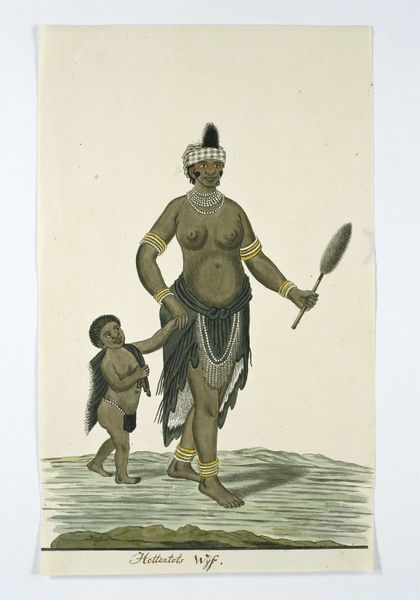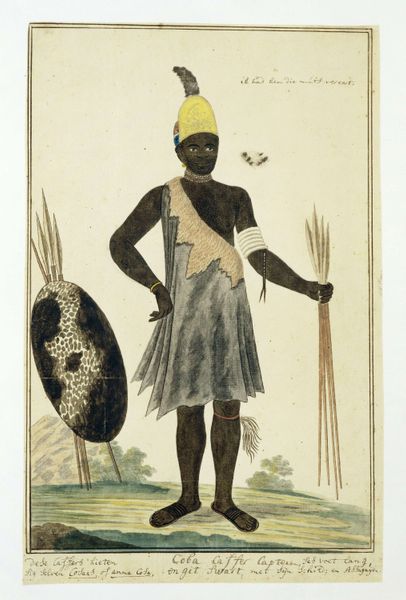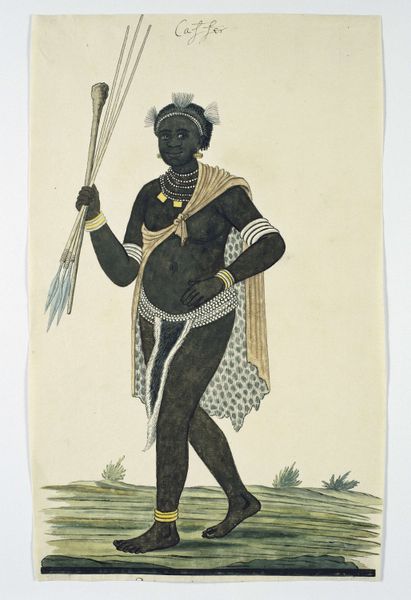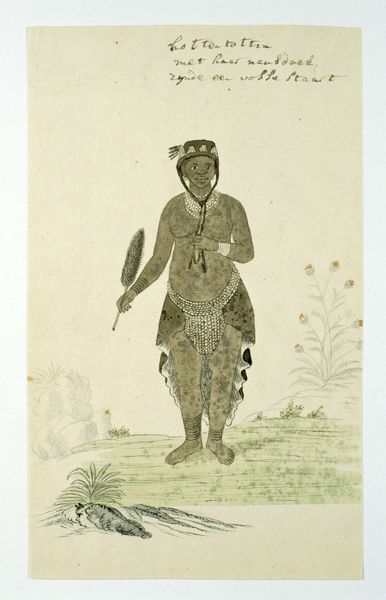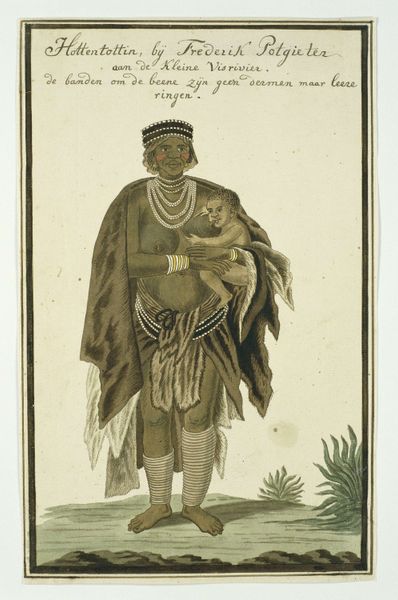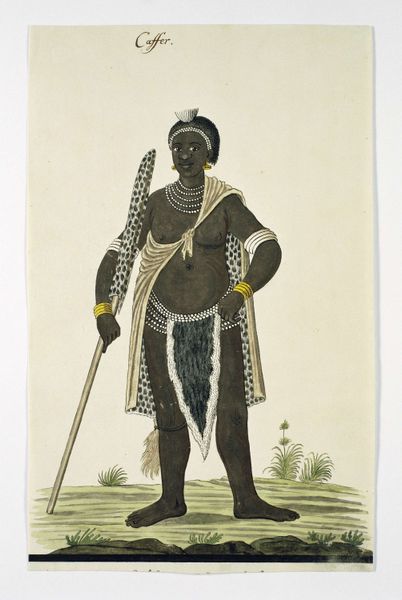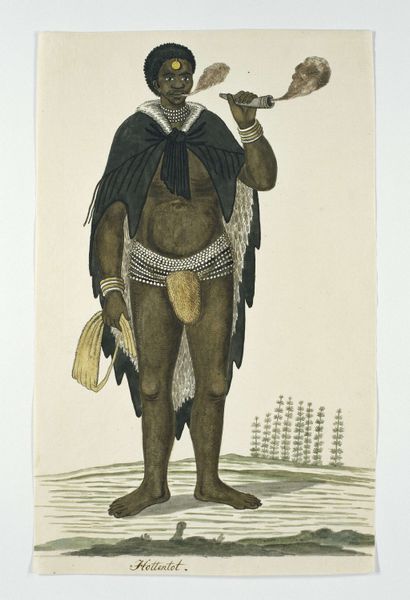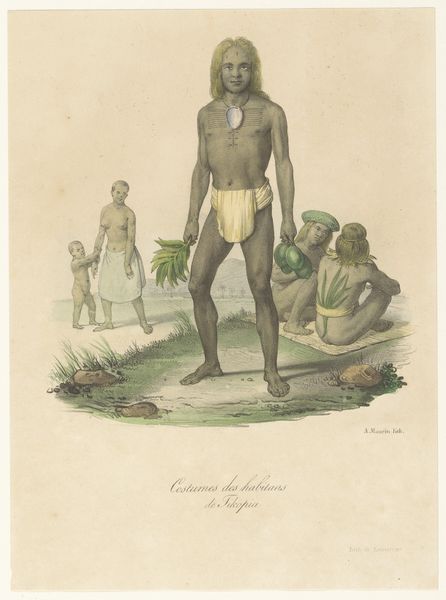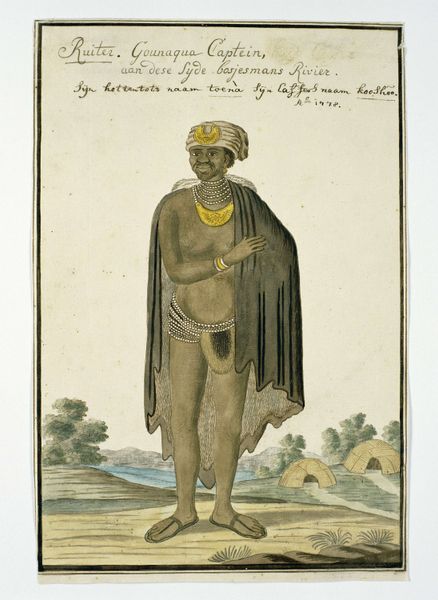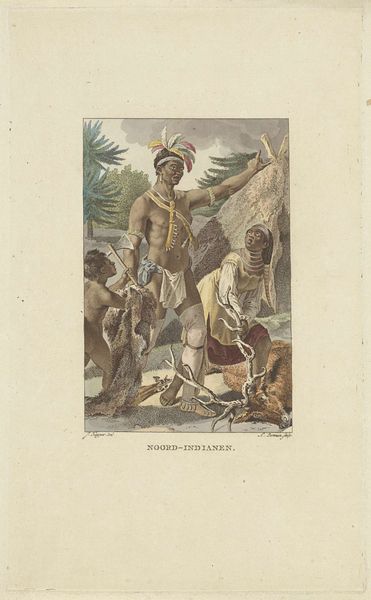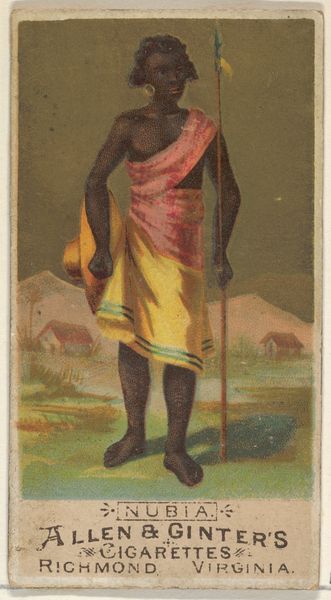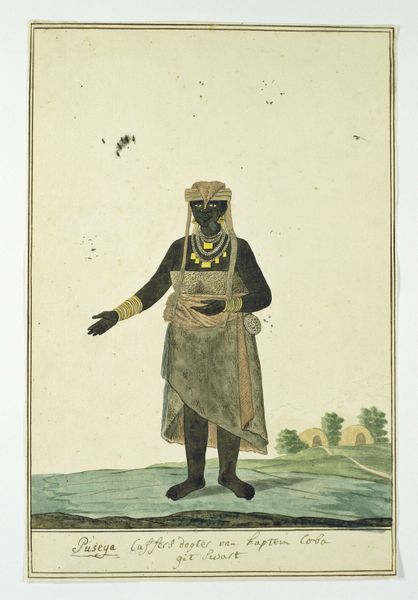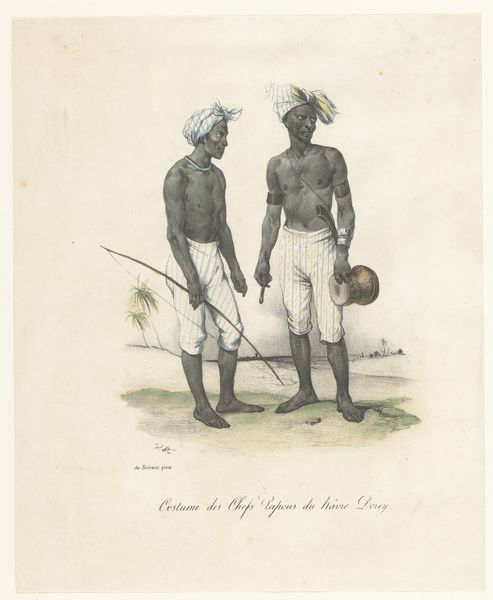
A standing, probably Khoikhoi, woman, with tobacco-pipe and child Possibly 1777 - 1786
0:00
0:00
drawing
#
drawing
#
caricature
#
framed image
#
portrait drawing
#
watercolour illustration
Dimensions: height 660 mm, width 480 mm, height 350 mm, width 220 mm, height 335 mm, width 219 mm
Copyright: Rijks Museum: Open Domain
Curator: Before us we have "A standing, probably Khoikhoi, woman, with tobacco-pipe and child," a watercolor and drawing by Robert Jacob Gordon, dating from around 1777 to 1786. Editor: What strikes me immediately is the raw texture captured in this watercolor rendering, almost feels ethnographic in its meticulous depiction of adornment and body form. The details on the beadwork practically leap off the page. Curator: Indeed. Consider the symbolism embedded within these beads and bangles. They represent far more than mere decoration; they denote status, lineage, and connection to ancestral spirits within Khoikhoi culture. The tobacco pipe she holds isn't just for smoking, but suggests ritual and social interaction. Editor: And what about the labor involved in acquiring these materials, shaping them into adornments, the trade networks that facilitated access, and who benefitted most from their circulation? Did Gordon consider those hands? The inscription at the bottom uses the term 'Hottentot' which itself reveals such complex issues. Curator: An important point. While Gordon aimed to document what he observed, his perspective was undeniably shaped by his time. However, he preserves cultural memory, consciously or unconsciously. We see her standing tall, exuding maternal strength while holding the child's hand. This posture echoes familiar images of motherhood across cultures. The gaze is direct, confident. Editor: But confident under whose gaze? Isn’t she objectified? There’s this tension between observing and othering. It’s visible in the application of the pigment itself. I wonder, did she and others have agency in the way they are presented in these sketches. Were there payments made, models compensated fairly? Curator: Those are crucial questions that encourage us to look critically. I consider it a powerful record of encounter and representation—its strengths and unavoidable flaws alike. The history, the visual conventions, speak loudly. Editor: I'm drawn to thinking of this less as a snapshot in time and more as a confluence of colonial trade and artistic processes, reminding me how profoundly entangled material culture is with political power. Curator: Agreed, understanding these intersections illuminates so much. Thank you, that gave me another insight into this piece.
Comments
No comments
Be the first to comment and join the conversation on the ultimate creative platform.
